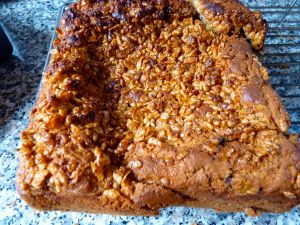Orange & ginger marmalade
In the depths of January we all need a sliver of brightness. Marmalade delivers that. It brightens up my morning toast every day.
Every year I look forward to the seville oranges arriving in the shops. I buy two kilos. One kilo to make marmalade straight away and one kilo to put in the freezer to make more in the summer. No one should be without a jar of marmalade in the cupboard.
Frozen oranges can be used straight from frozen using the method below.
My Aga Marmalade is my go to recipe, this just has the added zing of ginger. Feel free to omit it if ginger is not your thing.
1 kg seville oranges
1 lemon, sliced in half
10cm piece of root ginger
2kg granulated sugar
1 litre water
200g stem ginger in syrup
Method
This makes 8-10 jars of marmalade. Sterilise the jars by washing them well and then pop into a low oven (100C) for about 15 minutes.
Place the oranges, lemon and piece of root ginger in a pan. Add the water. The water should just cover the oranges if it doesn’t try using a smaller pan. I then place a smaller saucepan lid that fits inside the pan on top of the oranges to keep them submerged. Bring this to the boil and then lower the temperature to simmer the oranges until they are soft. This can take a couple of hours. If you are using an Aga you can then place the pan in the simmering oven.
Once the oranges are soft leave them to cool in the water. Once cool take the oranges out of the water and cut them in half. Scrape all of the pulp back into the cooking liquid including the pulp from the lemon. The lemon and piece of root ginger can both be discarded. Place the pulpy liquid back onto a medium heat and bring to the boil. Boil for 6 minutes. Strain the liquid through a sieve, pushing through as much pulp as you can. It is this pulp that will help the marmalade to set and give the marmalade plenty of flavour.
Cut the orange peel as thick or thin as you prefer. Pop a saucer in the freezer so that you can test the marmalade for wrinkles. Cut the stem ginger into small pieces (depending on how small or large you will want to eat it).
Put the sugar in with the water and stir over a gentle heat until the sugar has fully dissolved. Add the peel and stir well. Bring to the boil and boil rapidly, it should be rolling like lava from a volcano for 15 minutes. Take the cold saucer and place a spoonful of the marmalade on to it. Add the stem ginger. Leave to cool and then push your finger through to test for set. It should just wrinkle slightly. If it doesn’t boil it until it does. Take the pan off the heat and leave to cool for 10 minutes before pouring into the sterile jars and sealing.
Orange & ginger marmalade Read More »









